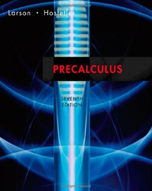Calculus
Precalculus 7th Edition solutions
Author: Ron Larson, Robert P. Hostetler
Publisher: Brooks Cole
ISBN: 9780618643448
Buy the book
Select Chapter:
